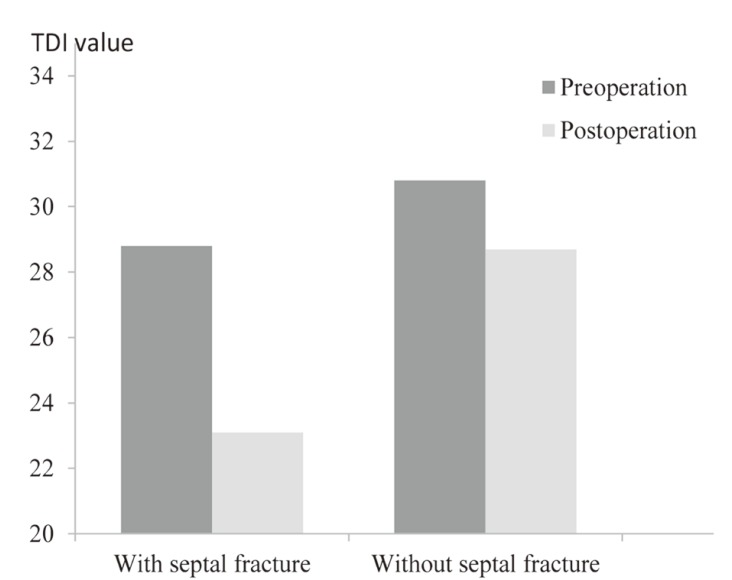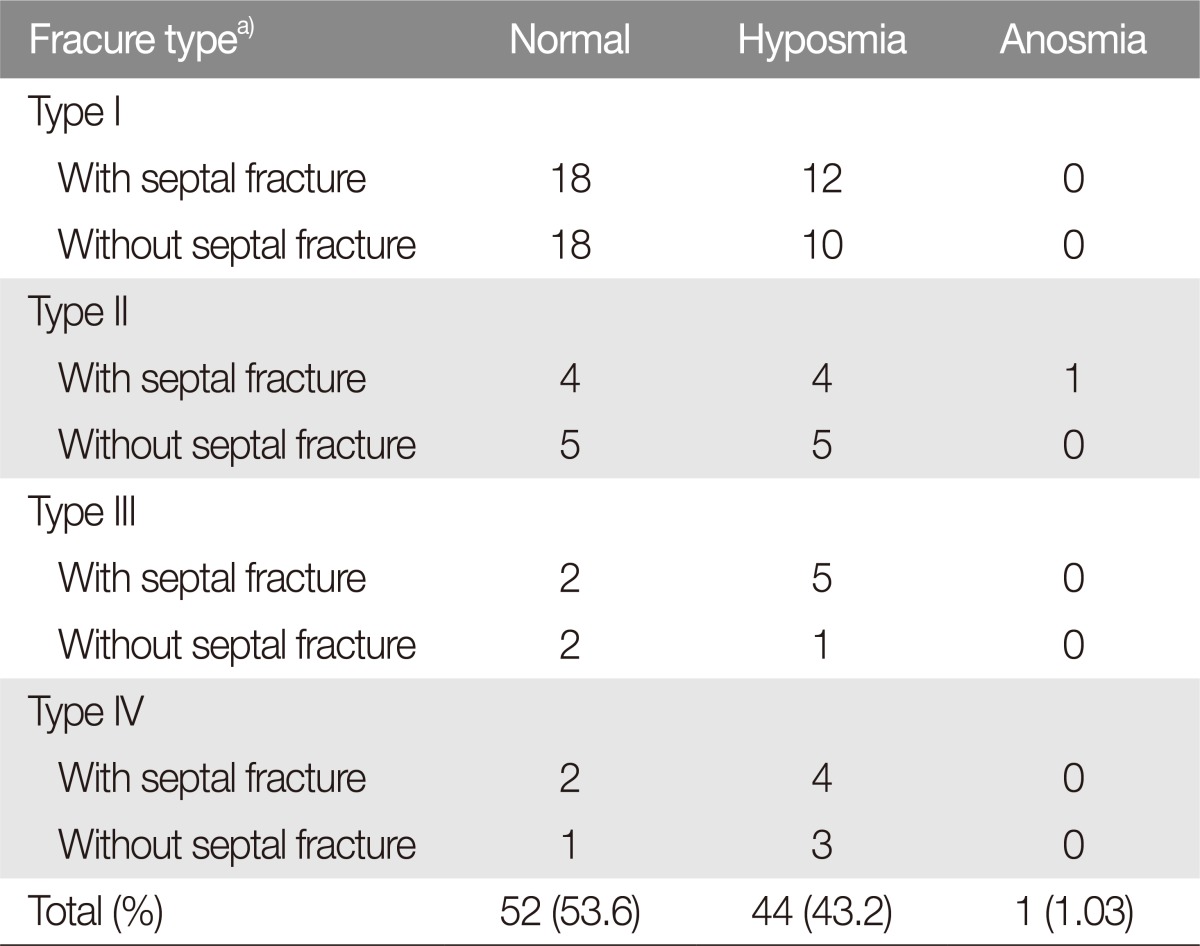1. Basheeth N, Donnelly M, David S, Munish S. Acute nasal fracture management: a prospective study and literature review. Laryngoscope 2015;125:2677-2684. PMID:
25959006.


2. Kucik CJ, Clenney T, Phelan J. Management of acute nasal fractures. Am Fam Physician 2004;70:1315-1320. PMID:
15508543.

3. Mondin V, Rinaldo A, Ferlito A. Management of nasal bone fractures. Am J Otolaryngol 2005;26:181-185. PMID:
15858774.


4. Hwang K, You SH, Kim SG, Lee SI. Analysis of nasal bone fractures: a six-year study of 503 patients. J Craniofac Surg 2006;17:261-264. PMID:
16633172.


5. Rohrich RJ, Adams WP Jr. Nasal fracture management: minimizing secondary nasal deformities. Plast Reconstr Surg 2000;106:266-273. PMID:
10946923.


6. Rhee SC, Kim YK, Cha JH, Kang SR, Park HS. Septal fracture in simple nasal bone fracture. Plast Reconstr Surg 2004;113:45-52. PMID:
14707621.


7. Haug RH, Prather JL. The closed reduction of nasal fractures: an evaluation of two techniques. J Oral Maxillofac Surg 1991;49:1288-1292. PMID:
1955920.


8. Murray JA, Maran AG, Mackenzie IJ, Raab G. Open v closed reduction of the fractured nose. Arch Otolaryngol 1984;110:797-802. PMID:
6508628.


9. Park HK, Lee JY, Song JM, Kim TS, Shin SH. The retrospective study of closed reduction of nasal bone fracture. Maxillofac Plast Reconstr Surg 2014;36:266-272. PMID:
27489845.



10. Ridder GJ, Boedeker CC, Fradis M, Schipper J. Technique and timing for closed reduction of isolated nasal fractures: a retrospective study. Ear Nose Throat J 2002;81:49-54. PMID:
11816391.


11. Hwang K, Yeom SH, Hwang SH. Complications of nasal bone fractures. J Craniofac Surg 2017;28:803-805. PMID:
28468171.


12. van Damme PA, Freihofer HP. Disturbances of smell and taste after high central midface fractures. J Craniomaxillofac Surg 1992;20:248-250. PMID:
1401097.


13. Fan LY, Kuo CL, Lirng JF, Shu CH. Investigation of prognostic factors for post-traumatic olfactory dysfunction. J Chin Med Assoc 2015;78:299-303. PMID:
25801491.


14. Haxel BR, Grant L, Mackay-Sim A. Olfactory dysfunction after head injury. J Head Trauma Rehabil 2008;23:407-413. PMID:
19033834.


15. Dursun E, Battal B. Olfactory dysfunctıon followıng nasal trauma. Int J Otorhinolaryngol 2008;10:1-4.
16. Coelho DH, Costanzo RM. Posttraumatic olfactory dysfunction. Auris Nasus Larynx 2016;43:137-143. PMID:
26441369.


17. Yousem DM, Geckle RJ, Bilker WB, Kroger H, Doty RL. Posttraumatic smell loss: relationship of psychophysical tests and volumes of the olfactory bulbs and tracts and the temporal lobes. Acad Radiol 1999;6:264-272. PMID:
10228615.


18. Renzi G, Carboni A, Gasparini G, Perugini M, Becelli R. Taste and olfactory disturbances after upper and middle third facial fractures: a preliminary study. Ann Plast Surg 2002;48:355-358. PMID:
12068215.


19. Costanzo RM, Miwa T. Posttraumatic olfactory loss. Adv Otorhinolaryngol 2006;63:99-107. PMID:
16733335.


20. Hong SC, Yoo YS, Kim ES, Kim SC, Park SH, Kim JK, et al. Development of KVSS test (Korean version of Sniffin' sticks test). Korean J Otolaryngol-Head Neck Surg 1999;42:855-860.
21. Stranc MF, Robertson GA. A classification of injuries of the nasal skeleton. Ann Plast Surg 1979;2:468-474. PMID:
543615.


22. Costanzo RM, DiNardo LJ, Zasler ND. Head injury and taste. In: Doty RL, editors. Handbook of olfaction and gustation. New York: Marcel Dekker; 1995. p. 775-783.
23. Welge-Lussen A, Hilgenfeld A, Meusel T, Hummel T. Long-term follow-up of posttraumatic olfactory disorders. Rhinology 2012;50:67-72. PMID:
22469607.


24. Kalavrezos ND, Graetz KW, Eyrich GK, Sailer HF. Late sequelae after high midface trauma. J R Coll Surg Edinb 2000;45:359-362. PMID:
11153423.

25. Costanzo RM, Becker DP. Smell and taste disorders in head injury and neurosurgery patients. In: Meiselman HL, Rivlin RS, editors. Clinical measurement of taste and smell. New York: Macmillan; 1986. p. 565-578.
26. Kimmelman CP. The risk to olfaction from nasal surgery. Laryngoscope 1994;104:981-988. PMID:
8052084.














